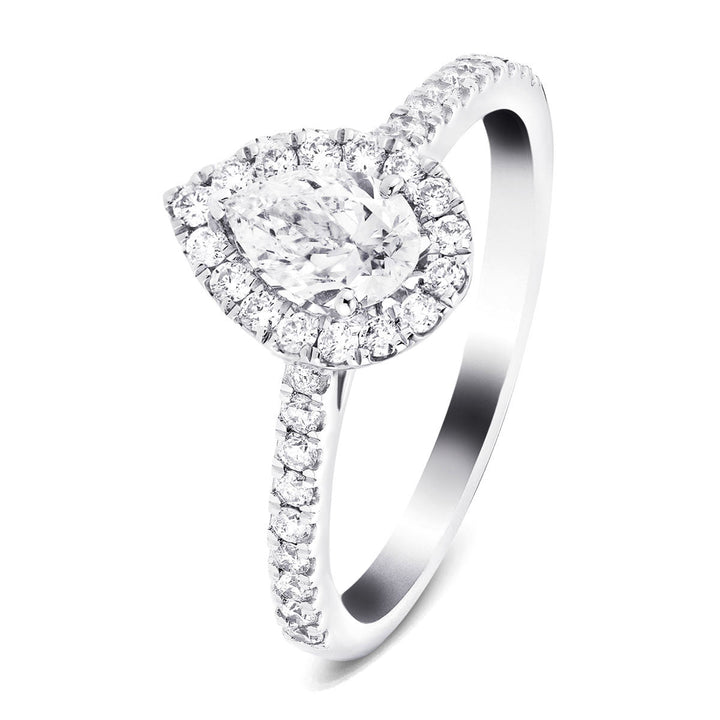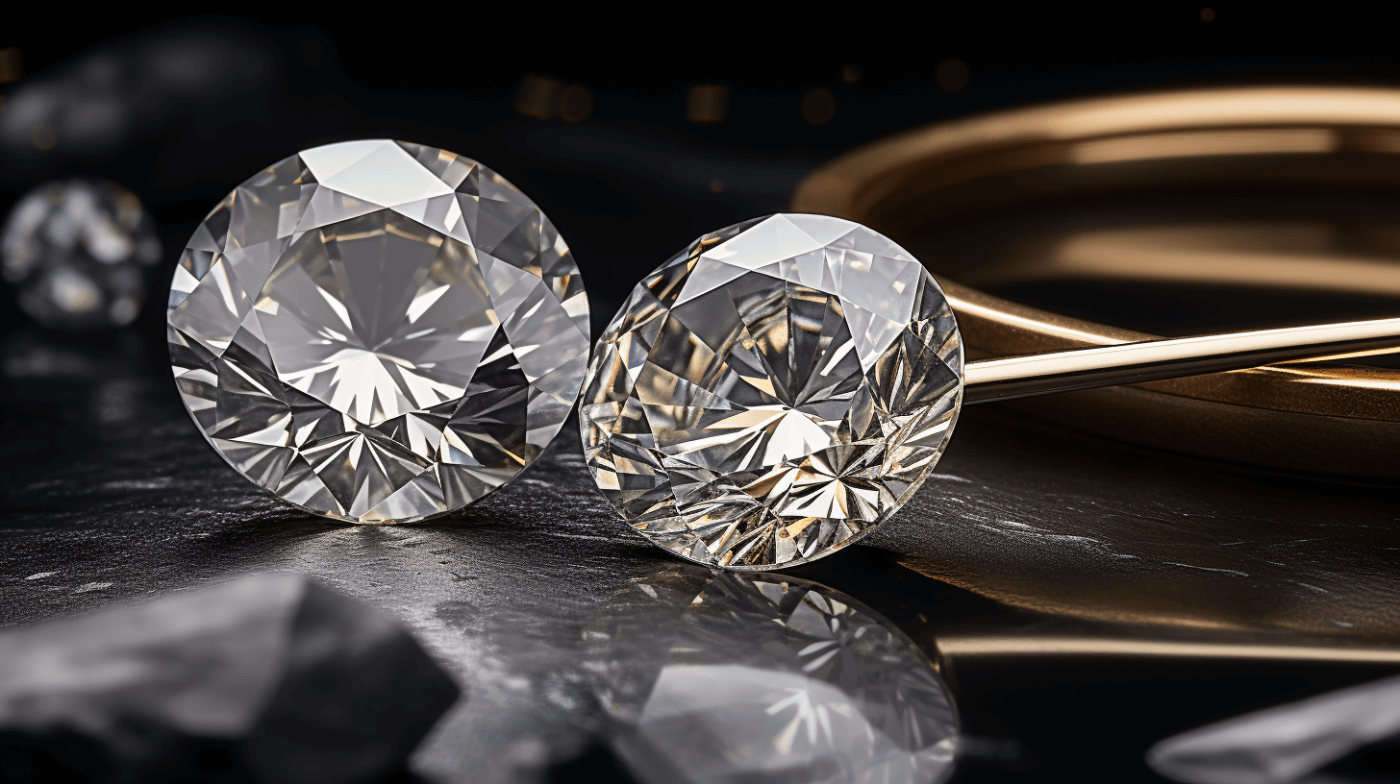Lab-grown and deep-mined diamonds are at the same time identical and yet quite different!
Natural diamonds form under intense heat and pressure deep within the heart of Earth's mantle. These precious stones, once only gifts of nature, are now replicated with precision in laboratories worldwide. Created through High Pressure, High Temperature (HPHT) or Chemical Vapor Deposition (CVD), these lab-grown counterparts possess identical properties to their natural siblings.
Yet amidst their shared brilliance and hardness lie subtle differences — traces of nitrogen or silicon, magnetic properties, unique reactions under UV light — that distinguish one from the other.
This article delves into the intriguing world of deep-mined diamonds and their synthetic twins. It explores contemporary methods used to create lab-grown diamonds and examines various scientific techniques for distinguishing between these two types of gemstones. Whether an aficionado or a novice in the realm of gemology, readers will find this exploration both enlightening and engaging as it unravels the fascinating mysteries surrounding these sparkling treasures.
Nancy Lab Diamond Halo Pear Engagement Ring 1.10ct G/VS in 18k White Gold

£1,230.00
£2,351.00
Experience the magic of love with the Nancy Lab Diamond Halo Pear Engagement Ring, designed to dazzle your senses. This ring boasts 1.10 carats of G/VS-graded diamonds, including a pear-cut diamond at the centre surrounded by a diamond halo. There… read more
Key Takeaways
- Lab-grown diamonds, also known as synthetic diamonds, are made from the same material as natural diamonds and have the same properties.
- Lab-grown diamonds can be created through HPHT or CVD processes, with the HPHT method involving pressure on graphite and the CVD method involving growing diamonds in a vacuum chamber using methane gas.
- Lab-grown diamonds can be treated to achieve different colours and can be differentiated from natural diamonds using thermal conductivity, electrical conductivity, and magnetic inclusions tests.
Understanding Synthetic Diamonds
In the intriguing world of gemstones, synthetic diamonds, also known as lab-grown diamonds, mirror their natural counterparts in composition and properties while offering an array of colours, including pink.
Created through either High-Pressure High Temperature (HPHT) or Chemical Vapor Deposition (CVD) processes, these gems present several advantages that align with current market trends.
Ethical concerns linked to mining are eliminated, making them a favoured choice for conscious consumers.
Additionally, the cost comparison reveals the affordability of synthetic options without compromising quality.
The environmental impact is another factor contributing to their increased popularity; lab-grown diamonds significantly reduce ecological damage compared to traditional diamond mining.
This understanding deepens as we further explore the fascinating process behind their creation.
Lab Diamond Solitaire Stud Earrings 1.00ct D/VVS in 18k White Gold

£900.00
£1,721.00
These stunning Lab Diamond Solitaire Stud Earrings are the perfect way to add a touch of sparkle to your wardrobe. Each earring features a round solitaire diamond set in a delicate claw setting. The diamonds have a combined weight of… read more
Methods of Creation
Exploring the creation methods reveals fascinating insights into synthetic and natural deep-mined gemstones.
- One significant advantage is the economic impact. Lab-grown diamonds can be produced in large quantities, reducing their price compared to mined counterparts.
- However, there are drawbacks too; for instance, lab-grown diamonds may lack the unique natural inclusions that some consumers value.
- Environmental considerations also come to play. Synthetic diamond production has a considerably lower carbon footprint than traditional mining.
- Yet, consumer preferences vary widely, with some still preferring the traditional allure of naturally occurring diamonds.
These factors will continue to shape future advancements in diamond technology.
As this intriguing journey continues, it's time to explore further into magnetic properties and inclusions found within these gemstones.
Magnetic Properties and Inclusions
Diving into the realm of magnetic properties and inclusions, it becomes evident that these features provide a rich tapestry of information about the formation and characteristics of both synthetic and natural gemstones.
The HPHT process employed in creating lab-grown diamonds often leads to the presence of magnetic inclusions such as nickel, iron, or cobalt. These can be detected using neodymium magnets, thus aiding identification.
On the other hand, deep-mined diamonds occasionally trap elements from their metallic growth medium, demonstrating diverse magnetic properties upon testing. This means that some deep-mined natural diamonds will appear to have the same properties as some lab-grown diamonds. This knowledge is not merely academic; it equips diamond enthusiasts with insights into their precious gems' intriguing origins and distinctive attributes.
Let's delve deeper into how these findings impact diamond testing techniques.
Diamond Testing Techniques
Assessing the authenticity and origin of these precious stones requires meticulous diamond testing techniques. Thermal conductivity tests are a common method employed, as they differentiate lab-grown from natural diamonds based on their dissimilar heat transfer properties. Another strategy is examining their electrical conductivity; synthetic diamonds often exhibit unique conductive characteristics due to minute inclusions resulting from the HPHT process.
Phosphorescence testing is valuable for identifying HPHT lab-grown diamonds, as they can exhibit an orange afterglow not typically seen in natural stones.
Diamond screeners provide a comprehensive analysis, detecting whether a stone absorbs or transmits shortwave UV light.
UV light testing is also beneficial, comparing reactions under different wavelengths of UV light.
Moving forward, we delve deeper into the intriguing phenomenon of fluorescence and its implications for diamond identification.
Fluorescence and UV Testing
In the dazzling world of gemology, fluorescence and UV testing emerge as crucial techniques that push the boundaries of our comprehension in identifying synthetic versus natural jewels.
These distinguishing factors serve to illuminate the unique properties that differentiate lab-grown diamonds from their naturally occurring counterparts.
The comparison of reactions under varying ultraviolet light conditions allows for accurate identification, with lab-grown diamonds reacting more strongly under shortwave UV light. In contrast, natural ones exhibit a greater response under long-wave UV light.
Using specialised testing equipment enables precise fluorescence detection, thus aiding gemologists in seamless diamond classification.
Through such innovative techniques and tools, the fascinating realm of deep-mined and lab-grown diamonds continues to captivate audiences while furthering scientific understanding within this niche field.
Frequently Asked Questions
How long does it typically take to create a lab-grown diamond?
The growth process for lab-grown diamonds, guided by technological advances, typically spans several weeks. Diamond quality varies based on time and conditions. Consumer preferences and the burgeoning lab-grown market are increasingly influencing this timeframe.
Are there any significant differences in durability or longevity between natural and lab-grown diamonds?
In terms of diamond quality, both natural and lab-grown diamonds exhibit similar durability and longevity. Colour differences, clarity comparison, cutting techniques, and jewellery maintenance do not significantly vary between these two types of diamonds.
How does the cost of lab-grown diamonds compare to natural diamonds?
Lab-grown diamonds, offering quality comparable to natural counterparts, are typically less costly due to efficient production methods. Consumer preferences and market trends influence their investment potential. Diamond certification assures quality, fostering a sense of belonging among owners. For example, a 0.50 carat solitaire ring sold by After diamonds might coast just over £550. A natural diamond ring of similar quality will cost in the region of £1000!
Can all types of diamonds be grown in a lab, or are some that can only be found naturally?
"Every cloud has a silver lining" - while lab-created processes can produce a wide range of diamond types, natural diamond uniqueness remains unmatched. Certain characteristics and inclusions found only naturally allude to lab-grown limitations. Gemological research advancements aid in diamond authenticity determination.
Are there any ethical or environmental advantages of choosing lab-grown diamonds over natural ones?
Lab-grown diamonds offer ethical and environmental advantages such as sustainable sourcing and reduced carbon footprint compared to natural ones. These conflict-free diamonds align with consumer perceptions of ethical mining, fostering a sense of responsible belonging.
Ella Lab Diamond Solitaire Engagement Ring 2.00ct G/VS 18k Yellow Gold

£1,955.00
£3,731.00
Say "I love you" with the Ella Lab Diamond Solitaire Engagement Ring, made with 18k yellow gold. This ring features a sparkling 2.00-carat G/VS lab-grown diamond that will take your breath away. IGI-certified and UK-hallmarked, this ring comes with a… read more
Conclusion
In the grand tapestry of gemology, lab-grown and deep-mined diamonds are intriguing threads that weave a tale of scientific marvel and natural wonder.
The advanced techniques used for their identification are a testament to human ingenuity. Understanding these precious gems serves as a portal to appreciate their beauty and unearth the profound processes they undergo in nature or under carefully orchestrated laboratory conditions.
This knowledge is essential in maintaining authenticity within the diamond industry, preserving its resplendent reputation.
We invite you to explore the stunning and ethically sourced collection of lab-grown diamond jewellery at After Diamonds. Our pieces offer not only the brilliance and allure of traditional diamonds but also the peace of mind that comes with sustainability.
Crafted with precision and passion right here in the United Kingdom, each item we sell is accompanied by a lifetime workmanship guarantee, reflecting our confidence in the quality of our craftsmanship.
Don't just buy jewellery, invest in a piece of art that stands the test of time. Discover the exceptional beauty, uncompromising quality, and conscious luxury that is After Diamonds today.




